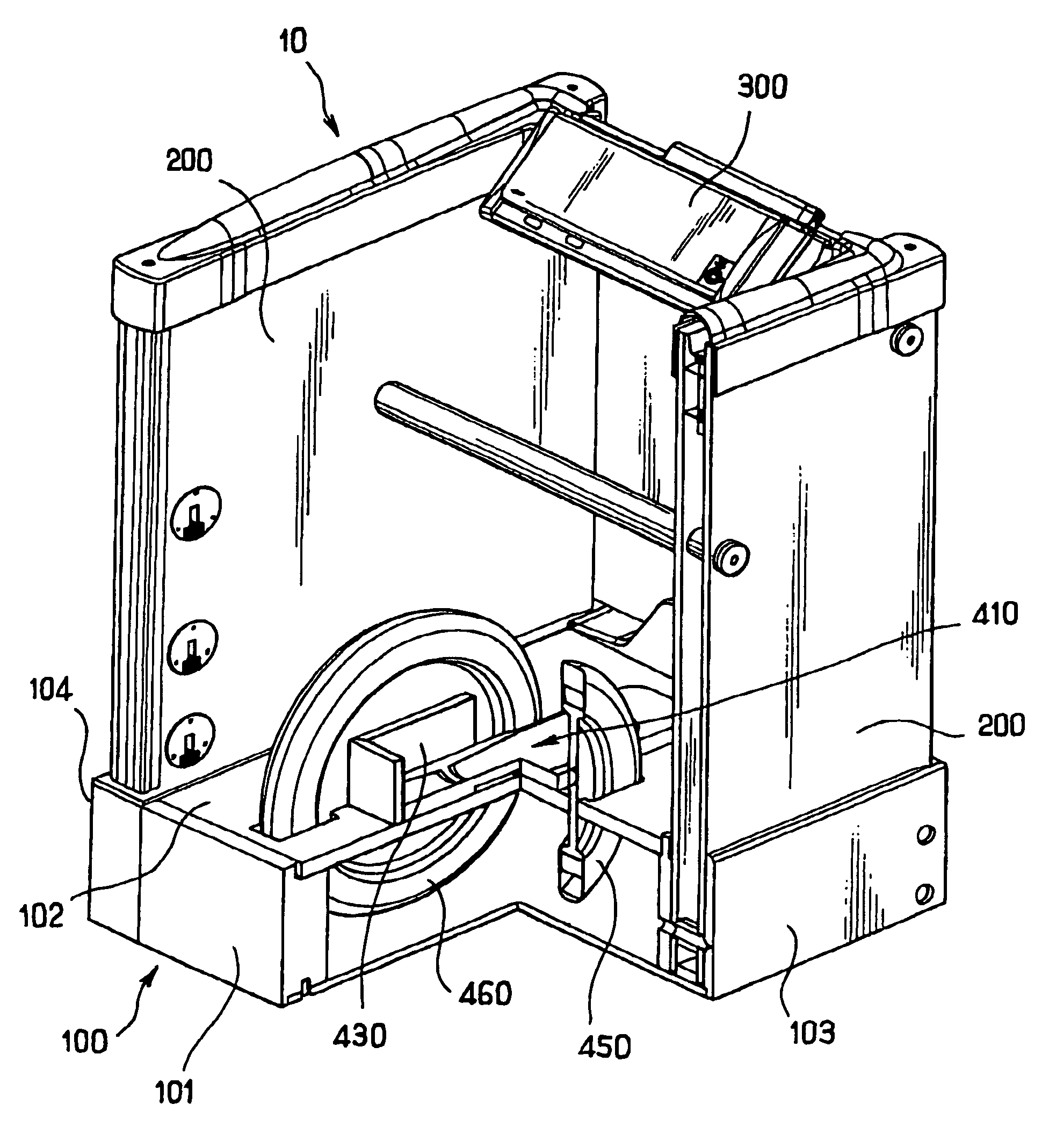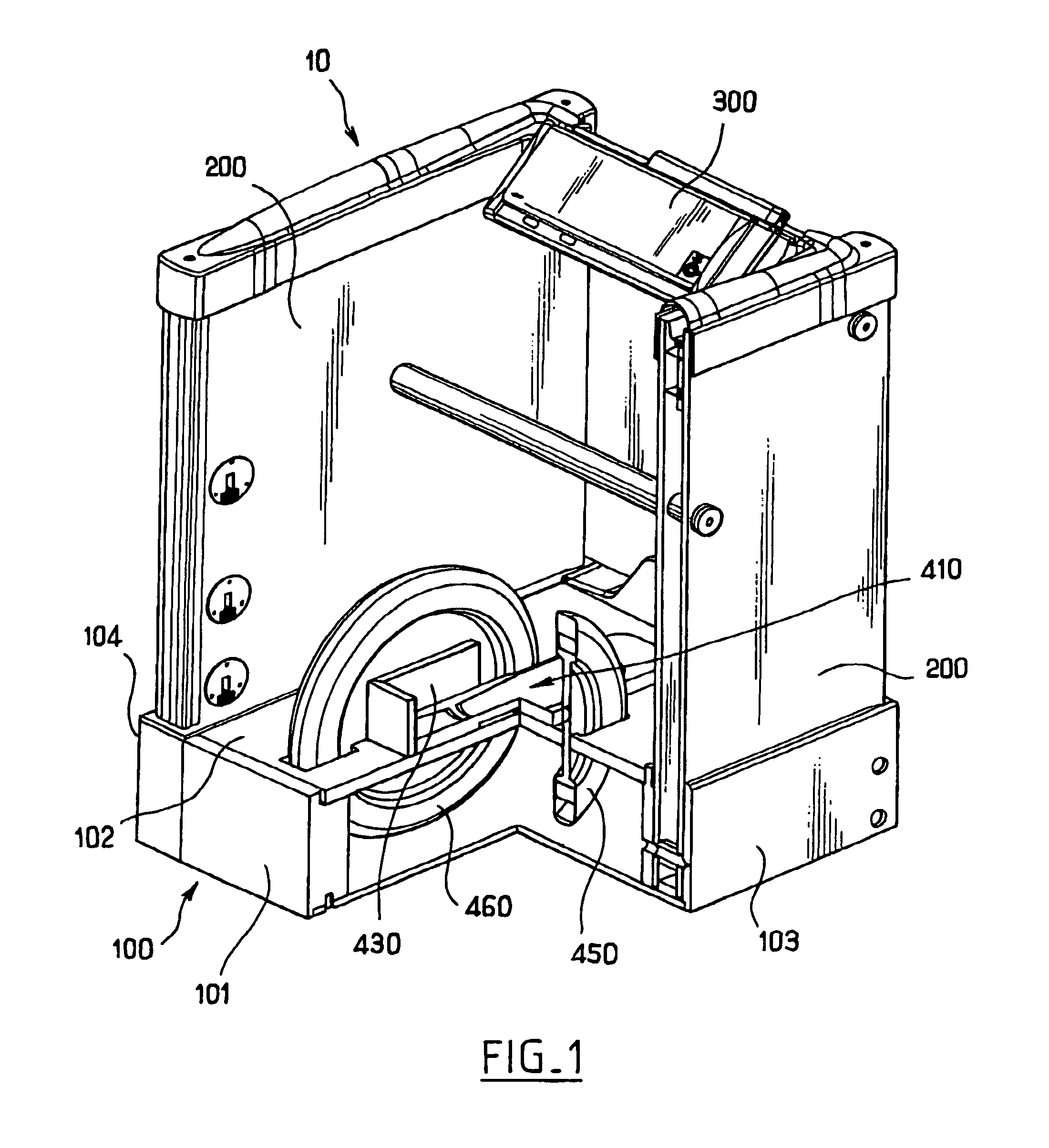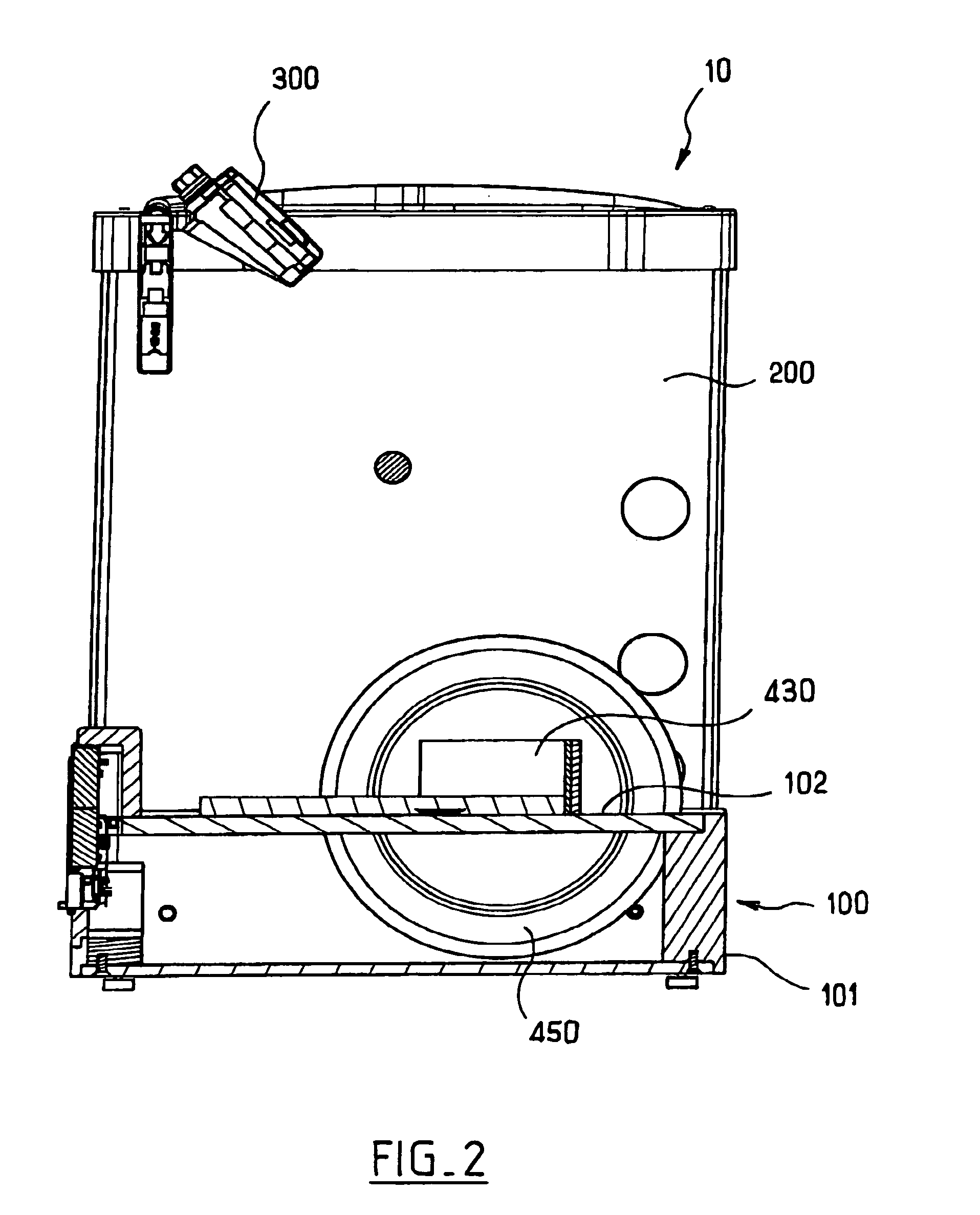Magnetic resonance detector for detecting non-authorized materials in footwear
a magnetic resonance detector and non-authorized material technology, applied in the field of detecting non-authorized substances, can solve the problems of release of any trace, inability to detect, and difficult visual inspection of the human body, and achieve the effect of improving reliability
- Summary
- Abstract
- Description
- Claims
- Application Information
AI Technical Summary
Benefits of technology
Problems solved by technology
Method used
Image
Examples
Embodiment Construction
[0038]As illustrated in FIG. 1, the stand 10 preferably comprises:[0039]a supporting base 100;[0040]two symmetrical side panels 200;[0041]position-identifying means 400;[0042]detector means 430, 450, 460 which comprise:[0043]two lateral windings 450, 460; and[0044]a shoe-TX / RX RF antenna 430;[0045]an information module 300.
[0046]The supporting base 100 is in the shape of a rectangular slab constituting a step. Its top surface 102 is plane.
[0047]The dimensions of the supporting base 100 are preferably as follows:[0048]width lying in the range 450 millimeters (mm) to 700 mm, typically being about 575 mm;[0049]depth lying in the range 500 mm to 900 mm, typically being about 626 mm; and[0050]height lying in the range 100 mm to 200 mm, typically being about 170 mm.
[0051]The top surface 102 comprises means forming the position-identifying marks where the individual to be inspected is supposed to put his foot.
[0052]The preferred shape of the means forming the position-identifying marks pro...
PUM
 Login to View More
Login to View More Abstract
Description
Claims
Application Information
 Login to View More
Login to View More - R&D
- Intellectual Property
- Life Sciences
- Materials
- Tech Scout
- Unparalleled Data Quality
- Higher Quality Content
- 60% Fewer Hallucinations
Browse by: Latest US Patents, China's latest patents, Technical Efficacy Thesaurus, Application Domain, Technology Topic, Popular Technical Reports.
© 2025 PatSnap. All rights reserved.Legal|Privacy policy|Modern Slavery Act Transparency Statement|Sitemap|About US| Contact US: help@patsnap.com



